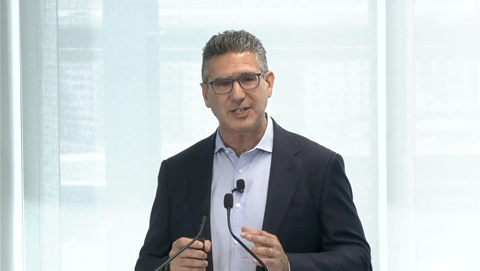IT departments have become skilled at identifying cost savings from IT investments, but increasingly the pressure is on to link technology spending to growth. It is not enough anymore for CIOs to simply measure ROI, they also need to clearly demonstrate it.
CEOs want IT projects that help bring in the big bucks. According to Deloitte, 72 percent of CIOs say projects that are most appealing to CEOs and executive leadership are those that generate revenue or focus on innovation and emerging technology.
This means the IT department is looking to emerging tools and solutions to help prove their worth in an organisation and according to Gartner when these IT financial management tools are properly scoped and implemented, CIOs understand the significant levels of financial transparency and business benefit.
Indeed many IT leaders may be starting further back than they imagine.
According to a report from Gartner, “While IT perceives itself as effectively collaborating with finance on cost management, finance (and several other business functions) does not perceive IT in the same light. Research with CFOs shows that during the budgeting cycle, IT is, in fact, perceived as siloed, technology-centric and short-sighted.”
The IT situation
The issue with the IT department is that they are not that effective at measuring their ROI but are working to get better, according to Chris Ganly, vice president at Gartner.
“They’re not effective because they don't focus on the right things, they don't focus on what value or what to outcomes. They focus too much on the internal view of technology of what we're doing, and what the parts are, not what the product is, and what the product allows the organisation to deliver and to achieve,” he explained.
This leads to insular conversations around operational metrics rather than outcome metrics.
“That's probably the downfall for a lot of organisations is focusing too much on the work, the activity, the technology, and not on what it enables the organisation to do. What does it allow the organisation to deliver, achieve or get as an organisation?
“The focus tends to be far too much on cost, and not enough on value or risk. The value conversation for organisations need to be a far more rounded conversation about revenue, value, cost and risk and what we're doing in IT helps the organisation achieve those outcomes,” he said.
And different organisations will approve projects based on various reasons, so not everything is about an ROI, Ganly said.
“We do undertake some things, because we want to be innovative or game changers, or we're updating upgrading our infrastructure. We're doing that around, either setting a platform for the future or a price for performance cost decision, then we get into the things that are about growth or revenue,” he said.
Most organisations will use a combination of some discounted cash flow metric, whether it be ROI, payback, as it’s a common technique Ganly said. However, he noticed that there is a mistake many organisations make.
“I see a lot of organisations trying to measure every project and every initiative the same way, and trying to force it to have an ROI when there is no ROI; it was never about ROI,” he explained.
“Having your portfolio understanding what type of initiative it is, is important. Then measuring in the right way, and having the right metrics and identifying them upfront, not after you've kicked off the project, identify then upfront, and then track them over a period of time,” he added.
ROI’s new look
The basics on ROI haven’t changed but ROI is now seen as multiple metrics rather than just one.
Ganly said there are now more value metrics organisations are looking for than just ROI.
“ROI is one, and it's an important one, but there's also additional metrics that organisations need to be looking at that go beyond just the ROI that talk about the outcomes to the organisation.
“For instance, what it's allowed us to achieve through customer satisfaction, time to market or growth not just purely the numbers,” he said.
The numbers are important, Ganly said but it’s not always about the numbers. “A value conversation needs to encompass more than just straight numbers,” he added.
For organisations to understand that the ROI is more than numbers, they have to break down the culture that is all about the dollars.
Ganly said some companies continue to perpetuate those ideas of dollars only and that haven’t thought broadly about what IT is allowing them to do.
“IT is an enabler to delivering outcomes, the inhibitor is that insular cost centre view and not the external view of what's this is going to allow us to do in the marketplace with our customers and their stakeholders,” he said.
“In technology or IT, if we're not doing something that's going to help us do it faster, cheaper, greater satisfaction, lower cost, then why are we doing it?” Ganly added.
“You have to question why we're doing it, there’s got to be an outcome, results and it's not always about the lower costs.”
Transparency of spending
Successfully navigating these issues not only helps a company's top line and bottom line, but also improves perceptions of the IT Group itself.
ANZ, one of Australia’s big four banks implemented new approaches to provide more transparency for its IT spending, says Gerard Florian, group executive – technology.
He told Digital Nation Australia one of the biggest impacts of implementing a formal methodology is that it builds it confidence for more projects the bank wants to carry through.
“We want to be able to show the true cost of running our larger systems get into home lending, markets trading or payments. We want the organisation to be able to understand the operational costs, but then also the incremental costs as we start to think about capacity,” he said.
“As we move more to the cloud, this becomes increasingly the case because we're going to be getting our monthly bills from the various cloud partners and our SaaS providers. It's going to be important that what we present to the business is quite dynamic.
“This is more important than ever, that the business and technology are looking at information that is meaningful, because the numbers reflect the business, more of a management account, as opposed to the finance.
Florian said through these formal methodologies, ANZ was able to clearly identify the benefits from its IT spending.
They could see the costs allocated, why and how they were allocated in the first place, Florian noted.
“What we've been able to do through this is see where you've got duplication of assets. You're able to see the full picture and confirm because we've got a greater level of granularity with the business leaders, and say this is exactly what's happening in your business,” he said.
“It's not just a generic conversation across our company, we can go to particular business leaders, where there's more of an opportunity and explained to them that if they were to change the policy or rethink some of the behaviours, there are savings to be had. As a result of that we're looking at 10 to 12 percent benefit purely from that exercise,” he added.
Added agility
Alain Duminy, director – IT department, finance and user services divison at the Asian Development Bank (ADB) said the bank implemented a methodologies to help the company become more agile.
“The board of ADB is extremely keen to see how the digital transformation of ADB can translate into a more effective and efficient delivery of ADB’s mission,” he said.
However, the ADB’s board needed to have a full visibility of the IT cost associated with this digital transformation and how these costs will evolve, Duminy said.
“In order to make ADB more agile and take quick advantage of the digital innovations that are now available, the ADB board has recently decided to change the budget mechanisms for IT projects, to reform an old way old style, to something much more agile,” he said.
Duminy said this opens great opportunities for IT, enabling it to be much more responsive to the needs of the organisation.
“To support this kind of new agile budgeting modality for to us by the board we had to add the Technology Business Management (TBM) framework to automate financial forecasting and scenario planning, as well as doing IT spend benchmarking, to compare ourselves to the industry and to our competitors,” he said.
Duminy said he is embedding the TBM best practices into every step of the IT finance lifecycle, “We look at TBM best practices from the budgeting perspective, the monitoring, the reporting, how we utilise a budget, and then the forecasting.”
Customer insight
EHealth NSW, is a shared service agency within NSW Health responsible for planning, implementing, and supporting ICT and digital capabilities across the New South Wales public health system.
Warren Clarke is the director of finance, his team provides finance support to eHealth in terms of budgeting, forecasting, reporting, analysis, statutory reporting, costing and pricing.
He said eHealth has applied digital solutions inside the organisation to help give their customers insight into their spending.
“We operate as a business unit working within New South Wales Health, so we charge our customers for the services that they consume. We've been running a legacy model for many years,” he said.
Clarke said they wanted to implement digital methodologies to increase transparency accuracy and accessibility giving eHealth’s customers more insights into the services they are charging them.
“So that they have a better understanding of the costs of their services that they're consuming,” he said.





.png&h=140&w=231&c=1&s=0)



.png&w=100&c=1&s=0)

 Digital Leadership Day Federal
Digital Leadership Day Federal
 Government Cyber Security Showcase Federal
Government Cyber Security Showcase Federal
 Government Innovation Showcase Federal
Government Innovation Showcase Federal
 Digital NSW 2025 Showcase
Digital NSW 2025 Showcase












_(1).jpg&h=140&w=231&c=1&s=0)



